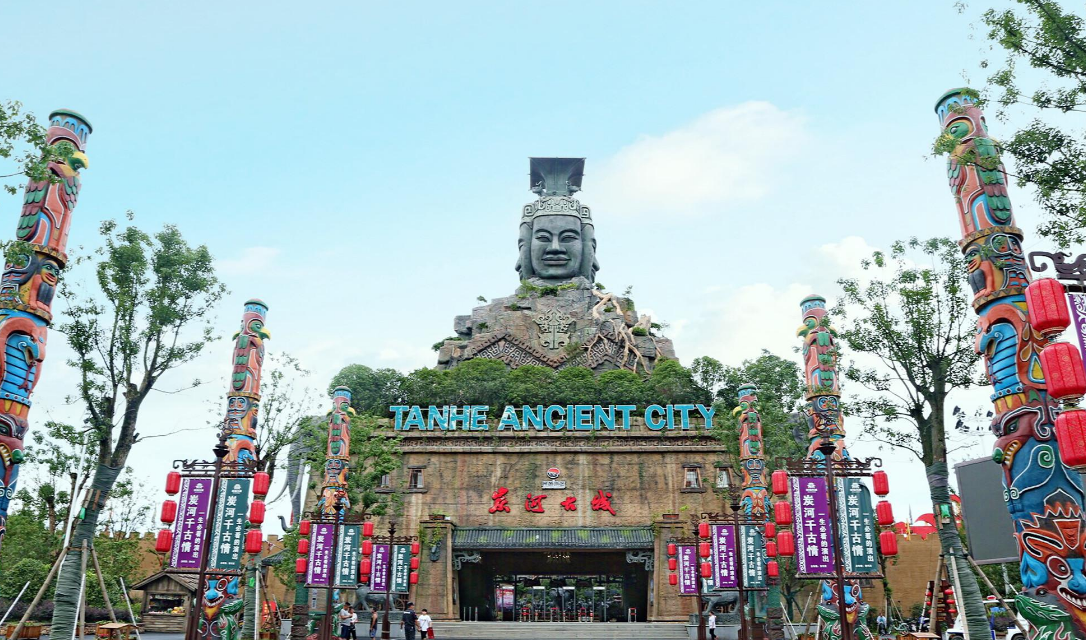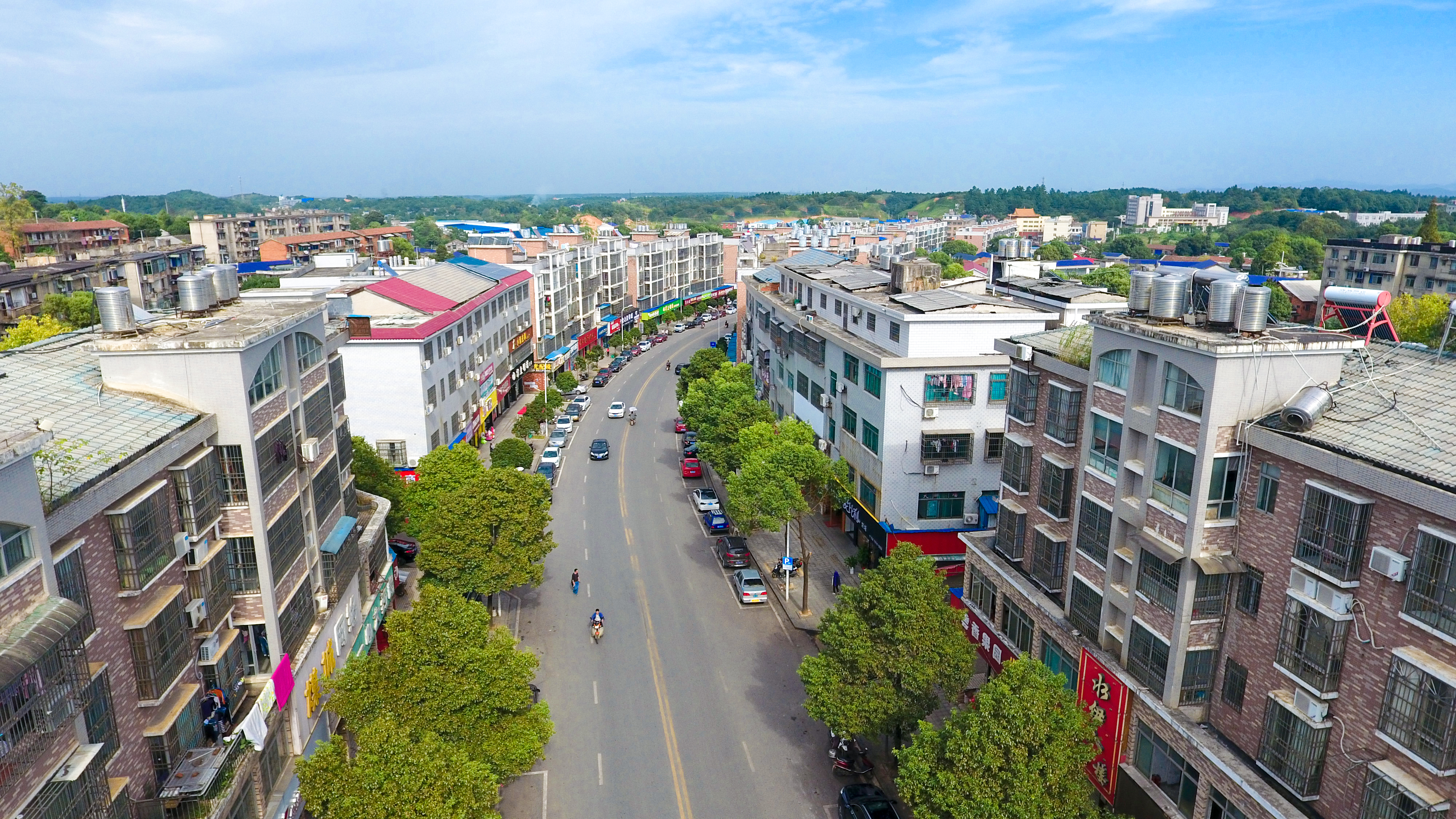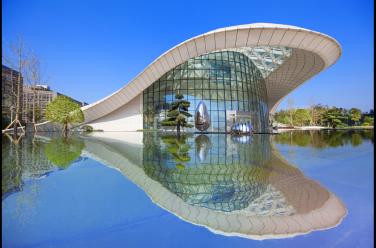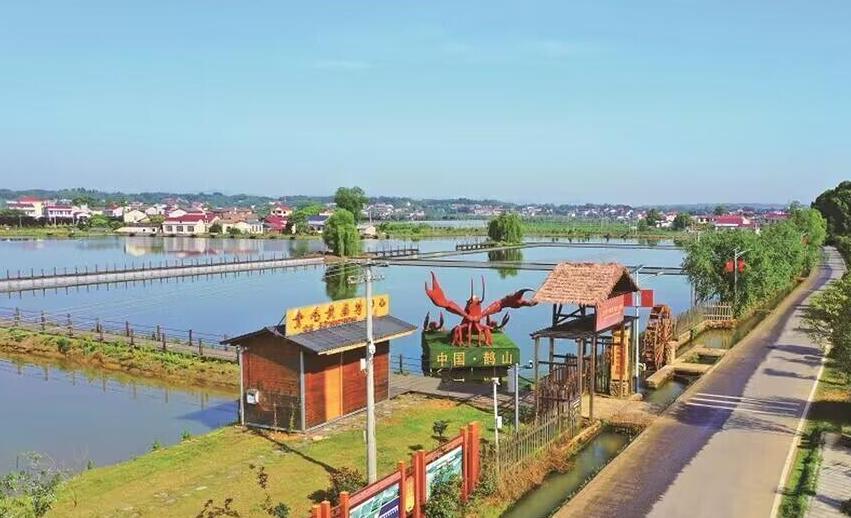Tanhe Ancient City
Tanhe Ancient City, based on the Tanheli Site, is China's first park themed on the Zhou Dynasty (c.11th century-256 BC).
The Zhou Dynasty was the source and heyday of the Chinese civilization, and it created a splendid culture. Ningxiang where the Tanhe Ancient City is located is known as the "Hometown of Bronze wares in South China." It has been the source of a number of important bronze wares, including the Four-ram Zun Vessel, a vessel of the late Shang Dynasty (c. 16th-11th century BC), and the Bronze Ding with human-mask design. It is also the center of ritual and music culture in China. The cultural genes of the Zhou Dynasty have been passed down from generation to generation, and are influential to this day.

The scenic area of the Tanhe Ancient City has simple and solemn palaces and temples as well as noisy and bustling old streets. Chime bells, poems, and rituals here make the life of three thousand years ago come back again, and the civilization from a distant age seems to reappear.
The ancient city also displays the life style of the Zhou Dynasty and provides tourists with rich experience through scenic spots such as the palace, ancient city walls, the military hall, six arts teaching and other Zhou cultural customs. In addition, high-tech experience projects and large-scale singing and dancing performances enable tourists to gain a deep understanding about the Western Zhou Dynasty. Utilizing the power of imagination and grandiose narration, it vividly represents the productions and life spaces and the scenes of the emperors and citizens of Ningxiang, and brings back the Bronze Age of 3000 years ago.
Technological means
Presentation of Life Style of Western Zhou Dynasty
The style of the Western Zhou Dynasty is shown through high-tech means at a cinematheque. On a 200-square-meter curtain, the dynamic images of nearly a thousand figures of different shapes vividly display the urban scenes of busy street trade, noisy markets, peaceful houses, and the alternation of day and night in the Zhou Dynasty.
Magic Arts Show of Jiang Taigong’s Control of the Forces of Nature
In 1046 BC, King Wu of the Zhou state led an army of about 40,000 to fight against Shang. King Zhou of Shang summoned an army of 170,000 slaves to protect the capital. The two sides fought a decisive battle in the area of Muye Lake, which is now known as the Battle of Muye. Due to the disparity in military strength, the Zhou army fell after a bitter fight.
At a critical juncture, Jiang Taigong, a famous sage during the Shang Dynasty (c. 16th century - 11th century BC), offered his life in prayer as a sacrifice for wind and rain. On the day of the battle, overwhelmed by the dark clouds, strong wind, thunder and lightning, and pouring rain, the Shang troops fell into chaos and were defeated. King Zhou went to the tallest point in his palace and burned himself to death. The battle marked the end of the Shang Dynasty and the inception of the Zhou Dynasty.
The magic arts house was built based on this story and tries to reproduce the astonishing scene of Jiang Taigong praying for the wind and rain, which provides tourists with an immersive experience.
Display of Life in the Imperial Harem
The harem generally refers to the living place of the emperor's wives and concubines, and usually it is a place full of power and secrets. At the experience house of of the Western Zhou Dynasty harem life, tourists can see many strange phenomena such as a musical instrument room that plays music automatically, bookshelves that can't fall down, and weird magic mirrors. They are eye-opening and show the bizarre life of an imperial harem.
Cultural projects
The Corridor of the Emperors of Western Zhou Dynasty
The Zhou Dynasty is divided into two periods: the Western Zhou (1046 BC-771 BC) and the Eastern Zhou (770 BC-256 BC).
The Western Zhou Dynasty was founded by Ji Fa, also known as King Wu of the Zhou Dynasty, and established its capital in Haojing. In 770 BC, King Ping moved the capital to Luoyi and brought about the beginning of the Eastern Zhou Dynasty. The Zhou Dynasty lasted for 791 years and included the reigns of 37 emperors in 30 generations. The Zhou Dynasty was technically the longest dynasty lasting 868 years and had the most emperors in Chinese history.
The corridor displays famous historical figures, including King Wen and King Wu of Zhou, Jiang Shang, the Duke of Zhou, and King Mu of Zhou in the Western Zhou Dynasty.
Sacrifice Square
The Sacrifice Square is the main place where important festivals and various grand ceremonies are held in the scenic spot.
Sacrifice was the most solemn rite of Zhou. Jitong (A Summary Account of Sacrifices) of the Book of Rites states: of all the methods for the good ordering of men, there is none more urgent than the use of ceremonies. Ceremonies are of five kinds, and there is none more important than sacrifices. It is the gods that bring blessings. Sacrifices are offered to heavenly gods, earth spirits, humans and ghosts. Based on the strict levels of sacrifices in the Zhou Dynasty, emperors could offer sacrifices to heavenly gods and earth spirits, dukes, princes and officials could sacrifice to mountains and rivers; while the gentry and civilian people could sacrifice to ancestors and the kitchen god.
Through sacrificial activities, the Chinese people pray for peace and prosperity, show deep respect for their forefathers, and cherish the memory of their ancestors.
Shehuo Plaza
Shehuo Plaza is the main venue in the scenic spot for various types of folklore activities. Shehuo is the oldest custom originated from the ancient people’s worship of land and fire. It was a product of witchcraft and totem worship in ancient times and a prayer for good weather, good harvests, national peace and prosperity, and good luck.
The Zhou Dynasty was the source and heyday of the Chinese civilization, and it created a splendid culture. Ningxiang where the Tanhe Ancient City is located is known as the "Hometown of Bronze wares in South China." It has been the source of a number of important bronze wares, including the Four-ram Zun Vessel, a vessel of the late Shang Dynasty (c. 16th-11th century BC), and the Bronze Ding with human-mask design. It is also the center of ritual and music culture in China. The cultural genes of the Zhou Dynasty have been passed down from generation to generation, and are influential to this day.

The ancient city also displays the life style of the Zhou Dynasty and provides tourists with rich experience through scenic spots such as the palace, ancient city walls, the military hall, six arts teaching and other Zhou cultural customs. In addition, high-tech experience projects and large-scale singing and dancing performances enable tourists to gain a deep understanding about the Western Zhou Dynasty. Utilizing the power of imagination and grandiose narration, it vividly represents the productions and life spaces and the scenes of the emperors and citizens of Ningxiang, and brings back the Bronze Age of 3000 years ago.
Technological means
Presentation of Life Style of Western Zhou Dynasty
The style of the Western Zhou Dynasty is shown through high-tech means at a cinematheque. On a 200-square-meter curtain, the dynamic images of nearly a thousand figures of different shapes vividly display the urban scenes of busy street trade, noisy markets, peaceful houses, and the alternation of day and night in the Zhou Dynasty.
Magic Arts Show of Jiang Taigong’s Control of the Forces of Nature
In 1046 BC, King Wu of the Zhou state led an army of about 40,000 to fight against Shang. King Zhou of Shang summoned an army of 170,000 slaves to protect the capital. The two sides fought a decisive battle in the area of Muye Lake, which is now known as the Battle of Muye. Due to the disparity in military strength, the Zhou army fell after a bitter fight.
At a critical juncture, Jiang Taigong, a famous sage during the Shang Dynasty (c. 16th century - 11th century BC), offered his life in prayer as a sacrifice for wind and rain. On the day of the battle, overwhelmed by the dark clouds, strong wind, thunder and lightning, and pouring rain, the Shang troops fell into chaos and were defeated. King Zhou went to the tallest point in his palace and burned himself to death. The battle marked the end of the Shang Dynasty and the inception of the Zhou Dynasty.
The magic arts house was built based on this story and tries to reproduce the astonishing scene of Jiang Taigong praying for the wind and rain, which provides tourists with an immersive experience.
Display of Life in the Imperial Harem
The harem generally refers to the living place of the emperor's wives and concubines, and usually it is a place full of power and secrets. At the experience house of of the Western Zhou Dynasty harem life, tourists can see many strange phenomena such as a musical instrument room that plays music automatically, bookshelves that can't fall down, and weird magic mirrors. They are eye-opening and show the bizarre life of an imperial harem.
Cultural projects
The Corridor of the Emperors of Western Zhou Dynasty
The Zhou Dynasty is divided into two periods: the Western Zhou (1046 BC-771 BC) and the Eastern Zhou (770 BC-256 BC).
The Western Zhou Dynasty was founded by Ji Fa, also known as King Wu of the Zhou Dynasty, and established its capital in Haojing. In 770 BC, King Ping moved the capital to Luoyi and brought about the beginning of the Eastern Zhou Dynasty. The Zhou Dynasty lasted for 791 years and included the reigns of 37 emperors in 30 generations. The Zhou Dynasty was technically the longest dynasty lasting 868 years and had the most emperors in Chinese history.
The corridor displays famous historical figures, including King Wen and King Wu of Zhou, Jiang Shang, the Duke of Zhou, and King Mu of Zhou in the Western Zhou Dynasty.
Sacrifice Square
The Sacrifice Square is the main place where important festivals and various grand ceremonies are held in the scenic spot.
Sacrifice was the most solemn rite of Zhou. Jitong (A Summary Account of Sacrifices) of the Book of Rites states: of all the methods for the good ordering of men, there is none more urgent than the use of ceremonies. Ceremonies are of five kinds, and there is none more important than sacrifices. It is the gods that bring blessings. Sacrifices are offered to heavenly gods, earth spirits, humans and ghosts. Based on the strict levels of sacrifices in the Zhou Dynasty, emperors could offer sacrifices to heavenly gods and earth spirits, dukes, princes and officials could sacrifice to mountains and rivers; while the gentry and civilian people could sacrifice to ancestors and the kitchen god.
Through sacrificial activities, the Chinese people pray for peace and prosperity, show deep respect for their forefathers, and cherish the memory of their ancestors.
Shehuo Plaza
Shehuo Plaza is the main venue in the scenic spot for various types of folklore activities. Shehuo is the oldest custom originated from the ancient people’s worship of land and fire. It was a product of witchcraft and totem worship in ancient times and a prayer for good weather, good harvests, national peace and prosperity, and good luck.

 Ningxiang listed on China’s top 100 counties with comprehensive competitiveness
Ningxiang listed on China’s top 100 counties with comprehensive competitiveness  College welcomes a student of courage
College welcomes a student of courage  Changsha Blue Moon Valley Intelligent Home Appliances Industrial Town
Changsha Blue Moon Valley Intelligent Home Appliances Industrial Town  This is Ningxiang High-tech Zone
This is Ningxiang High-tech Zone 





